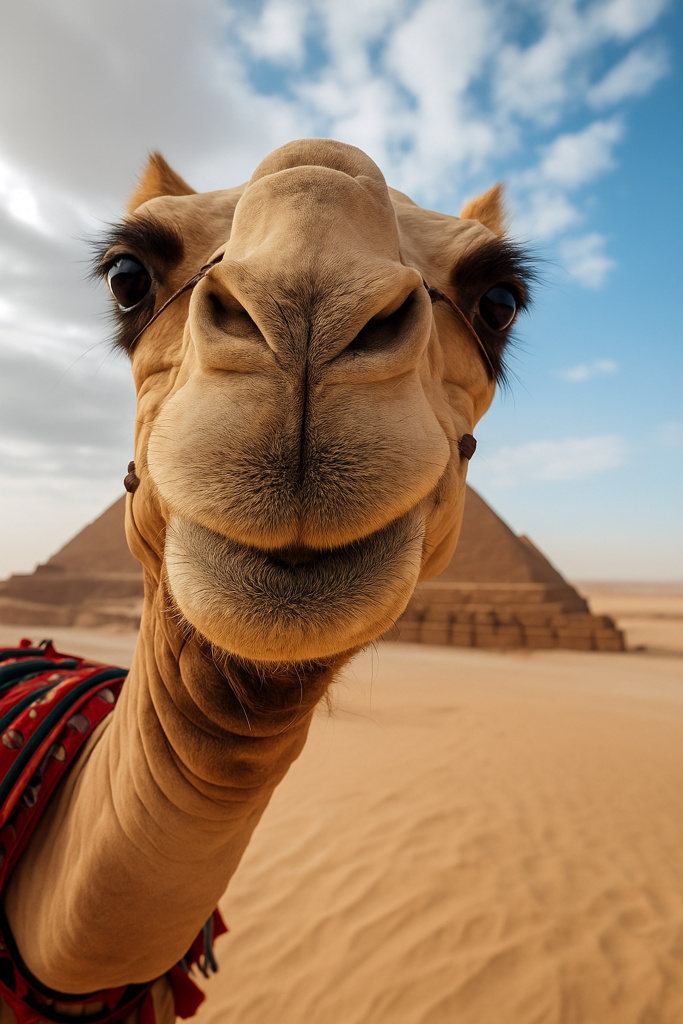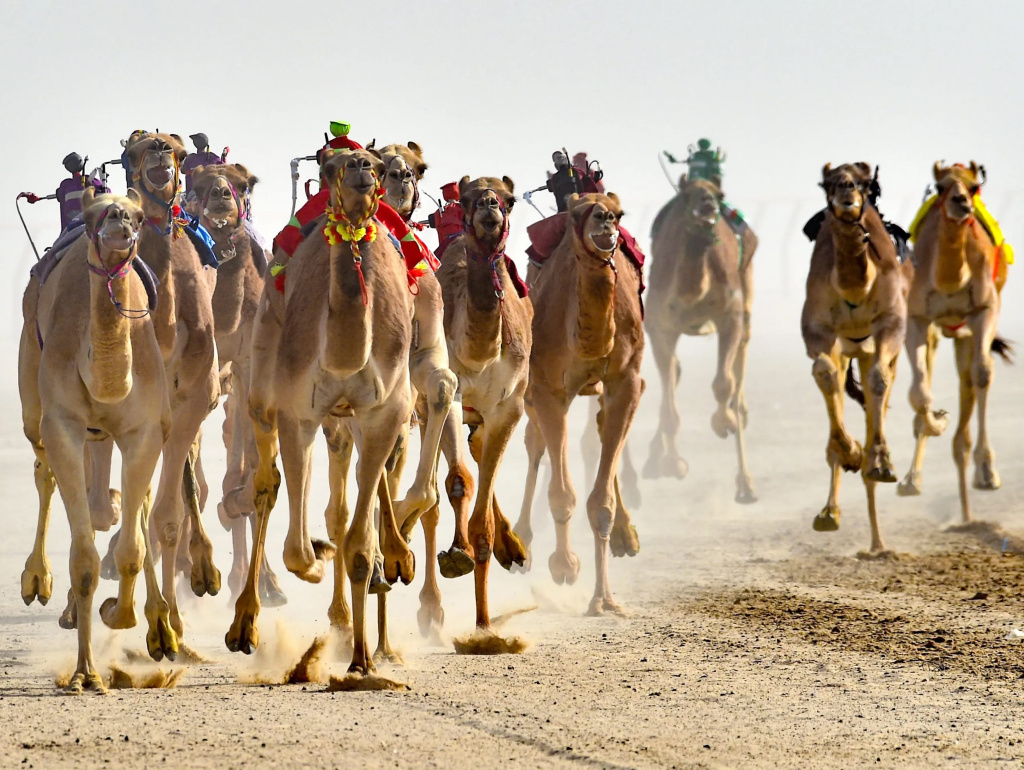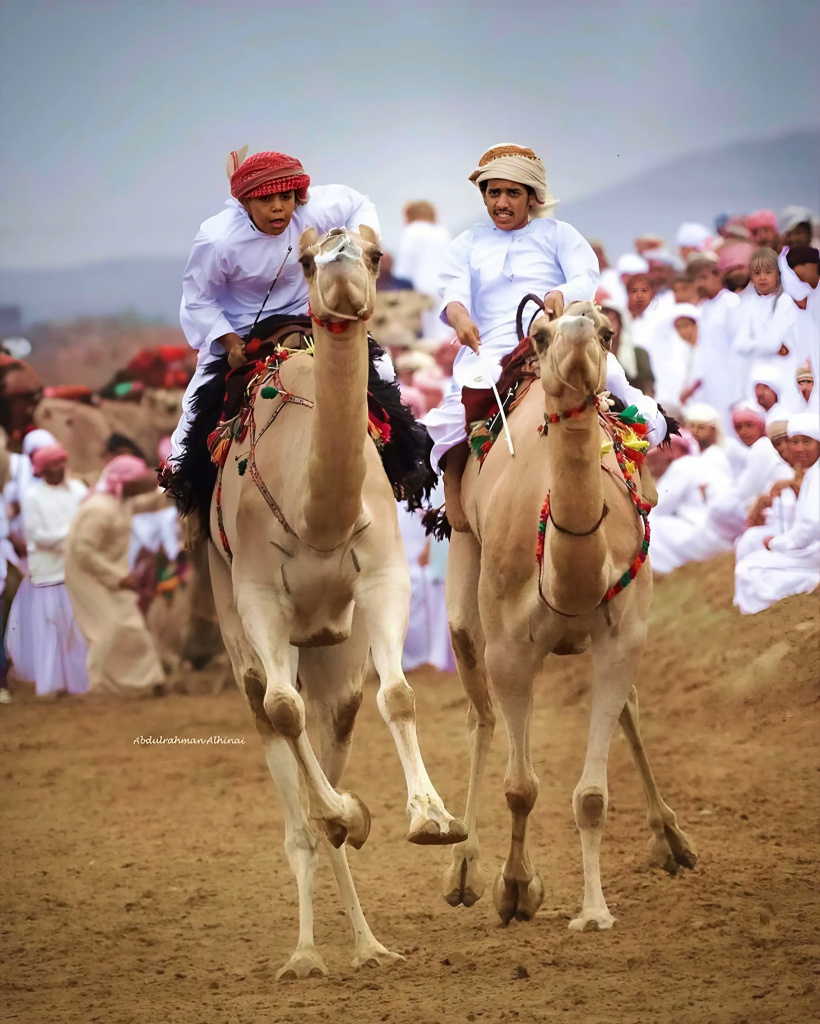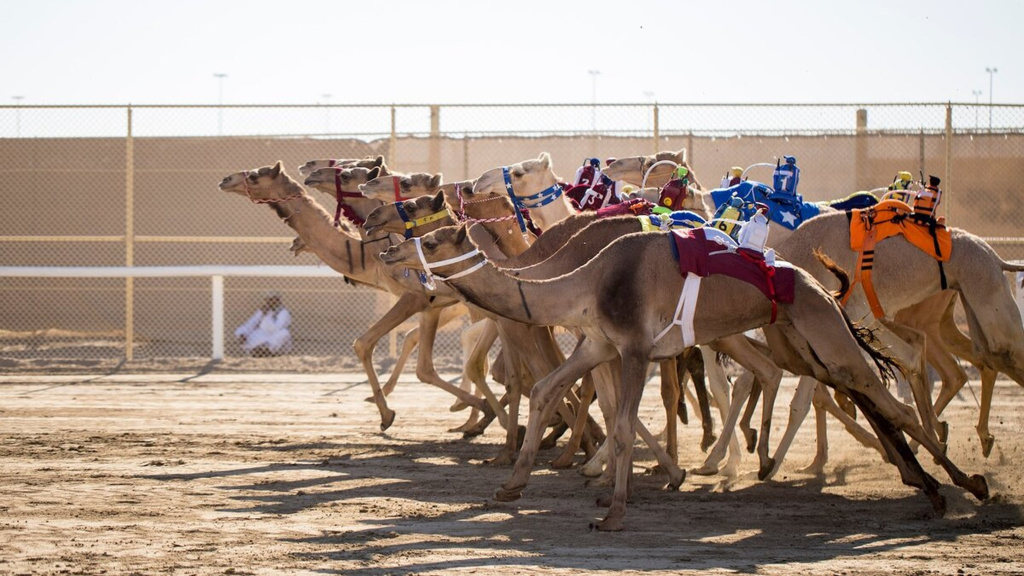
Ships of the Desert
Camels are known as the ships of the desert, and this common Western phrase has never been a metaphor for the people of the East. For centuries, dromedaries crossed vast desert landscapes between North Africa, Iran, and the magical land of India, transporting goods and people, offering their owners companionship and hope, milk and meat, and serving as a symbol of a nomadic lifestyle that remained unchanged for hundreds of years. Descendants of the very same camels that once traveled in caravans during the time of the Prophet Muhammad were still walking the desert paths well into the 20th century. For Bedouin nomads, the camel was both a friend and a primary source of wealth.

The History of Camel Racing
Camel racing in the Arab world dates back to the early Middle Ages. However, it saw a revival in the 1960s, after the automotive revolution left many camels — formerly essential in desert caravans — without a role. Releasing dromedaries into the wild was not an option; historically, they had never lived in the wild, unlike the two-humped Bactrian camels of Central Asia.

Race Characteristics
Camels can reach speeds of up to 65 km/h on short tracks and about 40 km/h on longer, hour-long races. Typically, female camels run faster than males due to their lighter weight — and they are the ones competing.
Technology in Service of Tradition: Robot Jockeys
In the 20th century, camel jockeys were usually boys aged 12–13, valued for their light weight and riding skills. These children often lived near the racetracks, suffered injuries during races, and their participation eventually came to an end.
In the 21st century, they were replaced by robots, which are operated by camel owners from accompanying vehicles. The robots are lighter — and now, the only thing to worry about is whose camel finishes first.
To determine winners accurately and avoid disputes with judges, each camel has a microchip implanted in its ear. This chip precisely records speed and race progression data.
The UAE President’s Cup — The Ultimate Prize
The UAE President’s Cup is one of the most prestigious events in the world of camel racing. The prize pool can reach up to $1 million. Winners also receive luxury cars and valuable gifts such as golden swords — underscoring the cultural significance of these competitions in the Arab world.

Camel Racing as a Real Estate Investment Factor
For those considering relocating to Dubai, attending a camel race is a great way to experience the culture of this fascinating city up close.
Many expats who decide to purchase real estate in Dubai choose villas and apartments in upscale neighborhoods located near traditional racing venues. This proximity also adds investment appeal for those putting money into UAE property.
Came, Saw, Invested
Camel racing is more than a traditional sport — it’s a unique cultural phenomenon that bridges the past and future of the Arabian Peninsula. By visiting Dubai, you’ll witness this thrilling spectacle, where ancient customs meet cutting-edge technology, and you may also explore one of the most lucrative real estate investment markets in the world.